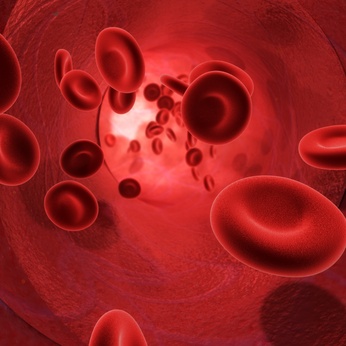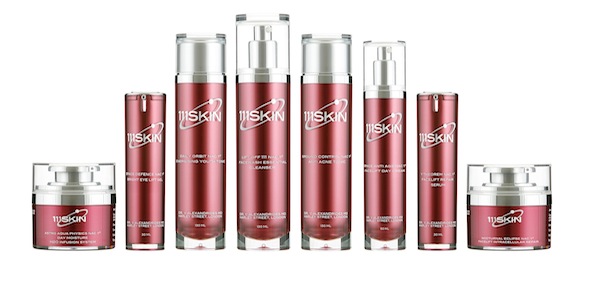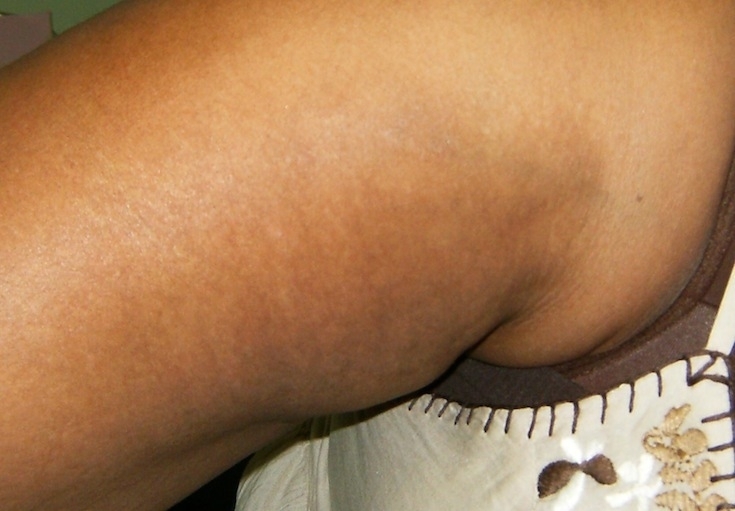CoQ10’s “Other” Health Benefits
By Sherry Kahn, MPH
Published in Life Extension magazine February 2006
Coenzyme Q10 is a mitochondrial energizer that has shown remarkable effects against common heart ailments and neurological disorders. In just the past year, scientists have uncovered specific mechanisms indicating that CoQ10 may have a role in fighting certain cancers. Most surprising, however, are new studies that show how CoQ10 guards against a wide array of common age-related disorders. In this article, we summarize recent discoveries that significantly broaden the clinical utility of CoQ10.
Guarding the Brain After Cardiac Arrest
People who survive cardiac arrest often suffer irreversible brain damage as a result of the disruption of oxygen to the brain. European researchers recently investigated whether combining CoQ10 with mild hypothermia–a technique proven to reduce neuronal damage and increase survival–might enhance the effects of that treatment.1
Forty-nine patients who had suffered cardiac arrest and then received cardiopulmonary resuscitation were randomly selected to receive hypothermia (reduction of body temperature) treatment plus CoQ10 or hypothermia plus placebo. The hypothermia treatment involved the patients being placed on a body-surface-cooling mattress.
The patients were then administered either liquid CoQ10 (250 mg followed by 150 mg three times daily for five days) or a placebo through a nasogastric tube. The remarkable findings showed that three-month survival in the CoQ10 group was 68%, compared to only 29% in the placebo group. Coenzyme Q10 thus helped reduce the death rate from cardiac arrest by an astounding 57%. The researchers also found that 36% of patients in the CoQ10 group had a good neurological outcome at three months, versus only 20% in the placebo group.1
Preventing the Onset of Migraine
Migraine headaches are a debilitating, all-too-common affliction. Because mitochondrial dysfunction may play a role in migraines by limiting oxygen metabolism, researchers recently explored the use of CoQ10 in preventing these headaches. Published in the February 2005 issue of Neurology, the research describes a placebo-controlled trial of 42 patients in Switzerland.2
Patients who had suffered migraines for a year or more, with two to eight attacks per month, were randomly assigned to receive either 100 mg of CoQ10 or placebo, three times daily. At the end of the three-month trial, the CoQ10-treated group had lower attack frequency and fewer headache days and days with nausea than did the placebo group. The mean number of monthly migraine attacks dropped from 4.4 to 3.2 in the CoQ10 group, compared to a negligible decrease from 4.4 to 4.3 in the placebo group.2
In this study, supplemental CoQ10 reduced migraine frequency by 27%.
Slowing Early Macular Degeneration
Age-related macular degeneration is the most common cause of vision loss in people over 60.3 With the deterioration of the macula (a tiny cluster of highly specialized cells in the retina) central vision progressively begins to blur. As the disease worsens, central vision loss may increase until it becomes impossible to perform tasks that require detailed vision, such as driving and reading.
In recent years, researchers have focused on how oxidative damage affects age-related macular degeneration. The eye, one of the body’s most metabolically active organs, not only generates an enormous amount of free radicals through normal function, but also incurs additional oxidative damage from ultraviolet radiation and air pollution. In recent trials, the use of antioxidants has been shown to counter age-related macular degeneration. For example, in an 11-center, double-blind clinical trial conducted by the National Eye Institute (a division of the National Institutes of Health), a combination of antioxidants plus zinc slowed macular degeneration progression in people with intermediate or advanced disease by about 25%.4
Hungarian scientists are now exploring a metabolic rather than an antioxidant approach to managing macular degeneration. Citing findings that mitochondrial dysfunction might also play a role in the development of the disease, the researchers designed a clinical trial to evaluate intervention in early age-related macular degeneration with a combination of compounds–including CoQ10–that have demonstrated the ability to improve mitochondrial metabolism. The researchers reported results of their double-blind, placebo-controlled trial last year in the journal Opthalmologica.5 More than 100 patients with early age-related macular degeneration were randomly assigned to receive either two capsules per day containing 200 mg of acetyl-L-carnitine, 780 mg of omega-3 fatty acids, and 20 mg of CoQ10, or capsules containing an equal quantity of soy oil.
At the end of the 12-month treatment period, the researchers found statistically significant improvement in the treatment group as measured by all four parameters of visual function studied. In addition, only one of the 48 patients (2%) in the treatment group showed clinically significant worsening in visual field mean defect (blind spots in the visual field), the primary study endpoint, compared to 9 of 53 patients (17%) in the placebo group. The decrease in drusen–tiny yellow retinal deposits associated with macular degeneration–of the treated eyes was also statistically significant compared to placebo when either the most-affected eyes or the less-affected eyes were considered. In the less-affected eyes, the drusen-covered area decreased by 23% in the treated group, but increased by 13% in the placebo group. These findings suggest that intervention with an appropriate combination of nutrients that affect mitochondrial lipid metabolism may stabilize and even improve visual functions in early age-related macular degeneration.5
New Applications in Fighting Cancer
Research on CoQ10 and cancer has focused on two lines of inquiry: CoQ10’s ability to improve immune response and its ability to decrease the cardiotoxicity caused by a common class of anti-cancer chemotherapeutic agents.
Patients with cancer often exhibit low levels of CoQ10,6,7 and researchers have shown that CoQ10 can increase immune response in humans.8
Based on these findings, Danish researchers investigated CoQ10’s effects alone and in combination with other nutrients as an adjunctive therapy for breast cancer.
In one case report, the researchers describe three breast cancer patients with metastasized cancer. The women underwent conventional cancer treatment and supplemented with a daily dose of 390 mg of CoQ10. All three women demonstrated tumor regression and decreased incidence of metastasis.9
In another study, the same research team investigated 32 high-risk breast cancer patients whose malignancy had spread to the lymph nodes.10 In addition to conventional therapeutic interventions, this group of patients received a daily combination of nutrients (vitamin C: 2850 mg; vitamin E: 2500 IU; beta-carotene: 32.5 IU; selenium: 387 mcg; and secondary vitamins and minerals), essential fatty acids (1.2 grams of gamma linolenic acid and 3.5 grams of omega-3 fatty acids), and 90 mg of CoQ10. At the end of the 18-month trial, six patients showed apparent partial remission, none of the patients showed signs of additional metastases, and their quality of life improved. None of the patients died during the study period, though four deaths were expected based on the patients’ disease stage. In one of the six patients with partial remission, the dose o
f CoQ10 in the nutritional protocol was increased to 390 mg. After two months, that patient’s tumor had disappeared completely, as confirmed by a mammogram.10
While chemotherapy drugs can be highly effective, their use can also be limited by toxic side effects. This has been noted in the case of anthracyclines, a class of drugs widely used in cancer chemotherapy. These drugs have demonstrated efficacy in the treatment of leukemia, lymphomas, and solid malignancies, and are often used to treat breast cancer, with higher doses yielding greater clinical responses. These higher doses of anthracyclines, however, can produce toxic effects on heart tissue, possibly leading to cardiomyopathy and heart failure that are not responsive to conventional pharmacological interventions.11 In fact, anthracyclines selectively damage mitochondria in the heart, but not in other organs.11 Since coenzyme Q10 supports both heart tissue and mitochondria, researchers conducted human trials to determine whether CoQ10 might prevent cardiotoxicity during the administration of anthracyclines.12
Two recent review articles addressed CoQ10’s potential as an adjunctive therapy during chemotherapy with anthracyclines. Writing in the Journal of Clinical Oncology, researchers summarized five reviewed studies in which CoQ10 was given along with anthracyclines.12 They report that in three of the studies that measured heart rhythm, patients who received CoQ10 showed favorable changes suggesting that CoQ10 might have a stabilizing effect on the heart. They also note that supplementation did not interfere with anthracycline treatment, and that no adverse effects were reported in any of the trials. The authors concluded that although coenzyme Q10 demonstrates potential for reducing cardiotoxicity, larger and more rigorous investigations are needed.
Slowing Neurodegenerative Disease Progression
Many investigators have conducted preclinical studies examining how oxidative stress and impaired mitochondrial function may contribute to neuronal cell death, a characteristic of Parkinson’s, Alzheimer’s, and other neurodegenerative diseases.13-17 For example, a recent journal article in Toxicology and Applied Pharmacology reported on the effects of the herbicide paraquat on neuronal cell death in the laboratory.17 The researchers found that this toxic chemical damaged mitochondria and increased free radical production, eventually resulting in the death of neuronal cells. Pretreatment of the cell cultures with CoQ10, however, inhibited both mitochondrial dysfunction and free radical generation.17 The researchers postulated that coenzyme Q10 may prove useful in preventing and treating neurodegenerative conditions related to environmental toxins.
While published research on the use of CoQ10 in slowing the progression of Alzheimer’s disease has been limited to preclinical studies, investigations of CoQ10 and Parkinson’s disease have moved into clinical trials, including randomized controlled studies. This work has been led by Clifford Shults, MD, professor of neurosciences at the University of California at San Diego School of Medicine. In Parkinson’s disease, brain cells that produce the neurotransmitter dopamine progressively die. Research in animals has shown that CoQ10 can protect the substantia nigra, the area of the brain where these cells reside. Studies by Dr. Shults and others have shown that mitochondrial dysfunction and diminished mitochondrial CoQ10 levels frequently occur in Parkinson’s sufferers.18
With funding from the National Institute of Neurological Disorders (a division of the National Institutes of Health), Dr. Shults and his colleagues undertook the first double-blind, placebo-controlled, multicenter clinical trial of CoQ10 in patients with early untreated Parkinson’s disease. In this phase II, dose-finding study, 80 patients were randomly assigned to receive one of three different CoQ10 doses (300 mg/day, 600 mg/day, or 1200 mg/day) with vitamin E, or a placebo containing vitamin E alone. The patients were followed for 16 months or until the participants required levodopa, a standard drug treatment for managing disease symptoms.19
The results, reported in the Archives of Neurology, showed that patients who received the largest dose of CoQ10 (1200 mg/day) had 44% less decline in mental function, movement, and ability to carry out activities of daily living than those who received the placebo.19 Patients who received CoQ10 doses of 300 mg/day and 600 mg/day also showed some slowing in decline compared to the placebo group, but not as much as those who took the highest dose. The authors concluded that CoQ10 was safe and well tolerated at doses up to 1200 mg/day.
Most recently, Dr. Shults and his team conducted an open label trial in which 17 patients were given an escalating dose of CoQ10 (1200 mg/day, 1800 mg/day, 2400 mg/day, and 3000 mg/day) combined with a stable dose of 1200 IU/day of vitamin E over a two-month period.20 They found that CoQ10 was well tolerated at high doses, but plasma levels of CoQ10 did not continue to rise when the dose was increased from 2400 to 3000 mg/day. There was no significant change in motor abilities in these Parkinson’s disease patients, some of whom were concurrently taking medications for the disease. Based on these findings, the researchers recommended conducting a phase III study to investigate the longer-term effect of high doses on previously untreated patients.
“Our [phase III] study will compare a placebo with 1200 mg/day and 2400 mg/day of CoQ10 and will enroll 200 subjects with early untreated disease in each treatment arm,” Dr. Shults told Life Extension in an exclusive interview. “The study . . . will probably take four years, with the results published a year later,” he added. In addition to that study, the National Institute of Neurological Disorders and Stroke is currently investigating the effects of a 2400-mg/day dose of CoQ10 in patients with early, untreated Parkinson’s disease.18
A clinical trial has also been undertaken in patients with Huntington’s disease, a neurodegenerative genetic disorder. This trial, conducted by the Huntington Study Group, randomly assigned 347 patients with Huntington’s disease to receive CoQ10 at 600 mg/day, remacemide hydrochloride at 600 mg/day, a combination of both, or placebo. Over the 30-month trial, the CoQ10 treated patients showed a 13% decrease in overall functional decline and beneficial trends in some secondary measures. However, the difference between the CoQ10 group and the other groups did not reach statistical significance.21
Other Potential Applications
In recent months, scientists have uncovered a widening array of applications for coenzyme Q10. According to new studies, CoQ10 may:
Protect against hearing loss. Mitochondrial DNA mutation is one cause of sensorineural hearing loss, a condition that causes changes in the inner ear or nerve pathways and is not correctable through medical interventions.23 In individuals with genetically based sensorineural hearing loss, coenzyme Q10 supplementation prevented further loss of hearing, while the control that did not supplement demonstrated continued deterioration of hearing function.
Improve learning. Supplementation with vitamin E and coenzyme Q10 helped a group of older mice to learn tasks more quickly than mice supplemented with only one of the two antioxidants.24 These findings suggest that coenzyme Q10 and vitamin E act in concert and may together help prevent age-related deficits in cognitive function.
Extend life span. In animals fed a diet enriched with polyunsaturated fatty acids, supplementing with coenzyme Q10 increased life span and protected against DNA alterations. Scientists recently determined that CoQ10 supplemen
tation may confer these benefits by attenuating the decline in naturally occurring antioxidants that commonly accompanies aging.25
Prevent cachexia. The combination of coenzyme Q10 with vitamins B2 (riboflavin) and B3 (niacin) offers promise in preventing the weight loss and muscle wasting associated with cancer. In cancer, mitochondrial energy production is diminished, which may ultimately lead to the fatigue, weight loss, and muscle loss known as cachexia. In rats with experimentally induced breast cancer, supplementation with the energy-modulating nutrients B2, B3, and CoQ10 helped restore mitochondrial energy production, suggesting that this nutrient combination may help prevent cachexia.26
Assist muscle regeneration. Supplementing with coenzyme Q10 and vitamin E supported muscle regeneration in animals with experimentally induced muscle decay. The investigators noted that CoQ10 exerted a greater influence on muscle regeneration than did vitamin E.27
Protect against surgical stress. Supplementing with 300 mg of CoQ10 daily for two weeks prior to heart surgery boosted measures of heart muscle health, investigators recently noted. When heart muscle samples of the supplemented individuals were analyzed following elective surgery, this tissue exhibited improved energy production, decreased oxidative stress, and enhanced recovery from oxygen depletion compared to tissue samples from unsupplemented patients.28
Promote male fertility. Coenzyme Q10 supplementation for six months improved asthenozoospermia (reduced sperm motility) in infertile men.29 In an earlier study, administering a CoQ10 analog to men led to significant increases in both sperm count and motility.30 These findings suggest that CoQ10 may help improve defective sperm function, a common and difficult-to-treat cause of male infertility.
Protect against senile plaques. A laboratory study demonstrated CoQ10’s ability to destabilize amyloid beta peptides, a hallmark abnormality of Alzheimer’s disease.31 This suggests a further potential neuroprotective mechanism of coenzyme Q10.
Impede diabetic complications. An animal study has shown that CoQ10 displays potential for preventing complications associated with diabetes.32
Lower triglycerides. The results of an Italian preliminary clinical trial suggest that the combination of CoQ10 and fibrate drugs may benefit individuals with exceedingly high levels of triglycerides who fail to respond to fibrates alone.33
Summary
The latest findings suggest that, along with its heart-protective effects, CoQ10 may slow or improve some degenerative diseases, support cancer remission, counteract the toxic effects of chemotherapy, and decrease the incidence of migraine headaches. Additionally, recent findings indicate that coenzyme Q10 may have applications in promoting fertility, protecting auditory function, supporting longevity, boosting learning capability, sustaining muscle health and much more.
CoQ10 investigations are expanding into new areas, and researchers are now calling for larger, well-designed studies to support intriguing findings from small and observational trials. With CoQ10’s pervasiveness in the body and the many essential functions it performs, scientists will no doubt continue to elucidate this vital nutrient’s many potential applications.
DYNAMIC DUO: COQ10 AND VITAMIN E
In addition to its direct scavenging of free radicals, CoQ10 also helps regenerate vitamin E, another important antioxidant. Vitamin E provides antioxidant protection in fat-soluble environments such as cell membranes.18 When coenzyme Q10 levels in cell membranes are diminished, regeneration of vitamin E is slowed as well.22
References
1. Damian MS, Ellenberg D, Gildemeister R, et al. Coenzyme Q10 combined with mild hypothermia after cardiac arrest: a preliminary study. Circulation. 2004 Nov 9;110(19):3011-6.
2. Sandor PS, Di CL, Coppola G, et al. Efficacy of coenzyme Q10 in migraine prophylaxis: a randomized controlled trial. Neurology. 2005 Feb 22;64(4):713-5.
3. Available at: www.nei.nih.gov/health/maculardegen.armd_facts.asp#1. Accessed November 16, 2005.
4. Anon. A randomized, placebo-controlled, clinical trial of high-dose supplementation with vitamins C and E, beta carotene, and zinc for age-related macular degeneration and vision loss: AREDS report no. 8. Arch Ophthalmol. 2001 Oct;119(10):1417-36.
5. Feher J, Kovacs B, Kovacs I, et al. Improvement of visual functions and fundus alterations in early age-related macular degeneration treated with a combination of acetyl-L-carnitine, n-3 fatty acids, and coenzyme Q10. Ophthalmologica. 2005 May;219(3):154-66.
6. Folkers K, Osterborg A, Nylander M, Morita M, Mellstedt H. Activities of vitamin Q10 in animal models and a serious deficiency in patients with cancer. Biochem Biophys Res Commun. 1997 May 19;234(2):296-9.
7. Portakal O, Ozkaya O, Erden IM, et al. Coenzyme Q10 concentrations and antioxidant status in tissues of breast cancer patients. Clin Biochem. 2000 Jun;33(4):279-84.
8. Folkers K, Morita M, McRee J, Jr. The activities of coenzyme Q10 and vitamin B6 for immune responses. Biochem Biophys Res Commun. 1993 May 28;193(1):88-92.
9. Lockwood K, Moesgaard S, Yamamoto T, Folkers K. Progress on therapy of breast cancer with vitamin Q10 and the regression of metastases. Biochem Biophys Res Commun. 1995 Jul 6;212(1):172-7.
10. Lockwood K, Moesgaard S, Hanioka T, Folkers K. Apparent partial remission of breast cancer in ‘high risk’ patients supplemented with nutritional antioxidants, essential fatty acids and coenzyme Q10. Mol Aspects Med. 1994;15 Suppls231-s240.
11. Conklin KA. Coenzyme q10 for prevention of anthracycline-induced cardiotoxicity. Integr Cancer Ther. 2005 Jun;4(2):110-30.
12. Roffe L, Schmidt K, Ernst E. Efficacy of coenzyme Q10 for improved tolerability of cancer treatments: a systematic review. J Clin Oncol. 2004 Nov 1;22(21):4418-24.
13. Somayajulu M, McCarthy S, Hung M, et al. Role of mitochondria in neuronal cell death induced by oxidative stress; neuroprotection by Coenzyme Q10. Neurobiol Dis. 2005 Apr;18(3):618-27.
14. Sohmiya M, Tanaka M, Tak NW, et al. Redox status of plasma coenzyme Q10 indicates elevated systemic oxidative stress in Parkinson’s disease. J Neurol Sci. 2004 Aug 30;223(2):161-6.
15. Menke T, Gille G, Reber F, et al. Coenzyme Q10 reduces the toxicity of rotenone in neuronal cultures by preserving the mitochondrial membrane potential. Biofactors. 2003;18(1-4):65-72.
16. Shavali S, Carlson EC, Swinscoe JC, Ebadi M. 1-Benzyl-1,2,3,4-tetrahydroisoquinoline, a Parkinsonism-inducing endogenous toxin, increases alpha-synuclein expression and causes nuclear damage in human dopaminergic cells. J Neurosci Res. 2004 May 15;76(4):563-71.
17. McCarthy S, Somayajulu M, Sikorska M, Borowy-Borowski H, Pandey S. Paraquat induces oxidative stress and neuronal cell death; neuroprotection by water-soluble Coenzyme Q10. Toxicol Appl Pharmacol. 2004 Nov 15;201(1):21-31.
18. Shults CW. Therapeutic role of coenzyme Q(10) in Parkinson’s disease. Pharmacol Ther. 2005 Jul;107(1):120-30.
19. Shults CW, Oakes D, Kieburtz K, et al. Effects of coenzyme Q10 in early Parkinson disease: evidence of slowing of the functional decline. Arch Neurol. 2002 Oct;59(10):1541
-50.
20. Shults CW, Flint BM, Song D, Fontaine D. Pilot trial of high dosages of coenzyme Q10 in patients with Parkinson’s disease. Exp Neurol. 2004 Aug;188(2):491-4.
21. Anon. A randomized, placebo-controlled trial of coenzyme Q10 and remacemide in Huntington’s disease. Neurology. 2001 Aug 14;57(3):397-404.
22. Crane FL. Biochemical functions of coenzyme Q10. J Am Coll Nutr. 2001 Dec;20(6):591-8.
23. Angeli SI, Liu XZ, Yan D, Balkany T, Telischi F. Coenzyme Q-10 treatment of patients with a 7445A—>G mitochondrial DNA mutation stops the progression of hearing loss. Acta Otolaryngol. 2005 May;125(5):510-2.
24. McDonald SR, Sohal RS, Forster MJ. Concurrent administration of coenzyme Q10 and alpha-tocopherol improves learning in aged mice. Free Radic Biol Med. 2005 Mar 15;38(6):729-36.
25. Bello RI, Gomez-Diaz C, Buron MI, et al. Enhanced anti-oxidant protection of liver membranes in long-lived rats fed on a coenzyme Q10-supplemented diet. Exp Gerontol. 2005 Aug;40(8-9):694-706.
26. Perumal SS, Shanthi P, Sachdanandam P. Energy-modulating vitamins–a new combinatorial therapy prevents cancer cachexia in rat mammary carcinoma. Br J Nutr. 2005 Jun;93(6):901-9.
27. Otrocka-Domagala I, Rotkiewicz T, Karpinska J, et al. The effect of coenzyme Q10 and vitamin E on the regeneration of skeletal muscles in pigs. Pol J Vet Sci. 2004;7(4):295-303.
28. Rosenfeldt F, Marasco S, Lyon W, et al. Coenzyme Q10 therapy before cardiac surgery improves mitochondrial function and in vitro contractility of myocardial tissue. J Thorac Cardiovasc Surg. 2005 Jan;129(1):25-32.
29. Balercia G, Mosca F, Mantero F, et al. Coenzyme Q(10) supplementation in infertile men with idiopathic asthenozoospermia: an open, uncontrolled pilot study. Fertil Steril. 2004 Jan;81(1):93-8.
30. Anon. Coenzyme Q10. Altern Med Rev. 1998 Feb;3(1):58-61.
31. Ono K, Hasegawa K, Naiki H, Yamada M. Preformed beta-amyloid fibrils are destabilized by coenzyme Q10 in vitro. Biochem Biophys Res Commun. 2005 Apr 29;330(1):111-6.
32. Al-Thakafy HS, Khoja SM, Al-Marzouki ZM, Zailaie MZ, Al-Marzouki KM. Alterations of erythrocyte free radical defense system, heart tissue lipid peroxidation, and lipid concentration in streptozotocin-induced diabetic rats under coenzyme Q10 supplementation. Saudi Med J. 2004 Dec;25(12):1824-30.
33. Cicero AF, Derosa G, Miconi A, et al. Possible role of ubiquinone in the treatment of massive hypertriglyceridemia resistant to PUFA and fibrates. Biomed Pharmacother. 2005 Jul;59(6):312-7.guog




 Internet dating functions, for those of you who have never done it, by each participant creating a name (nickname) for themselves, plus a strap line – which I assume is meant to embrace some positive and/or interesting component of their character and other stuff about themselves to attract prospective suiters. And also what they would like to see in a mate. Really it’s a personal advert for yourself.
Internet dating functions, for those of you who have never done it, by each participant creating a name (nickname) for themselves, plus a strap line – which I assume is meant to embrace some positive and/or interesting component of their character and other stuff about themselves to attract prospective suiters. And also what they would like to see in a mate. Really it’s a personal advert for yourself.


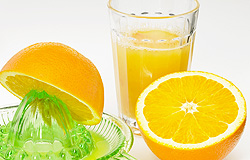



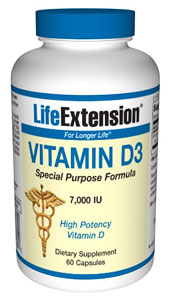


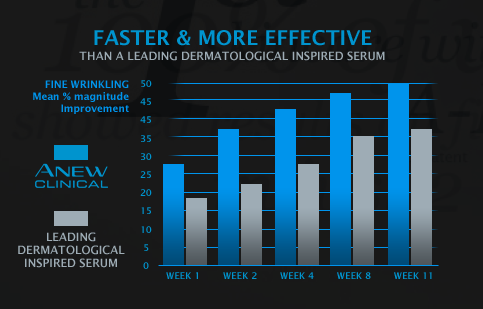
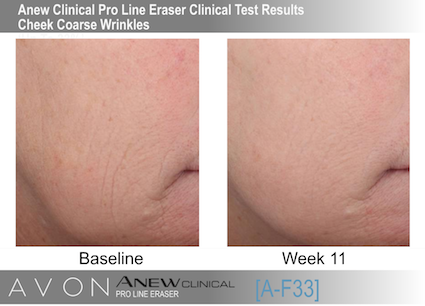

![aerobicexercise [100x100].jpg](https://www.elixirnews.com/assets_c/2012/07/aerobicexercise%20%5B100x100%5D-thumb-100x99-651.jpg)








 Pinneys’ smoked salmon expert explains the difference between the different types of smoking methods and types of salmon
Pinneys’ smoked salmon expert explains the difference between the different types of smoking methods and types of salmon




![actual brain [100x100].jpg](https://www.elixirnews.com/assets_c/2012/07/actual%20brain%20%5B100x100%5D-thumb-100x64-638.jpg)


